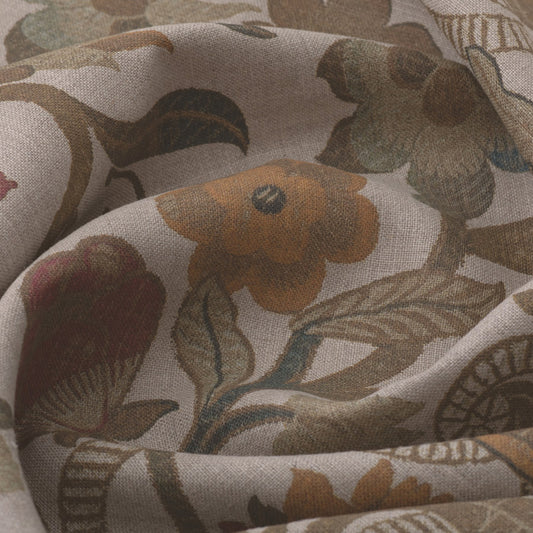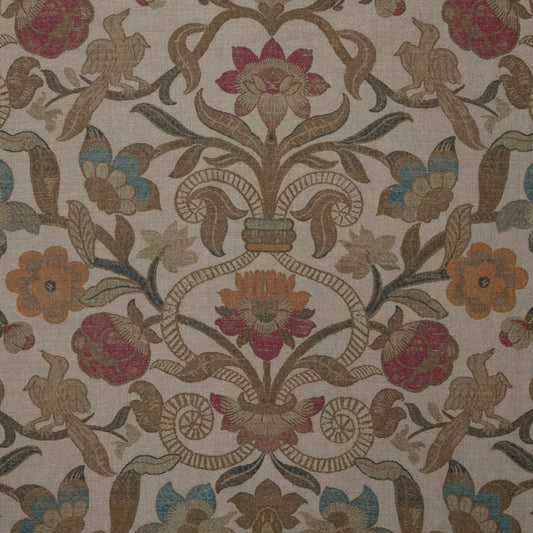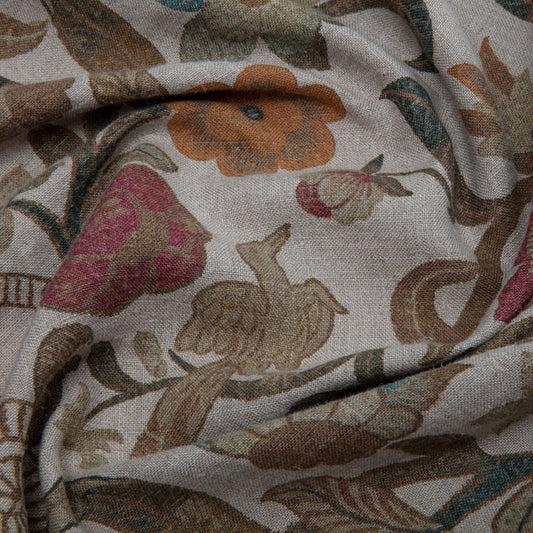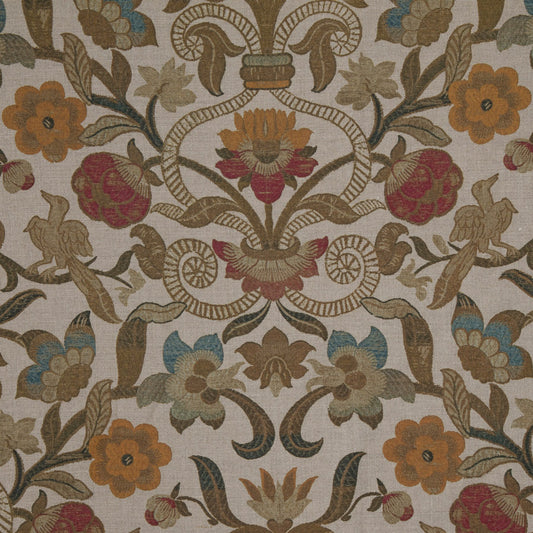At Inchyra we only work with pure natural fabrics - linen and wool - and we have now moved entirely to digital printing from screen printing to produce fabrics that are as sustainable as possible. Here's why:
- Linen is one of the most environmentally friendly fabrics available. The entire flax plant is used in the production process, leaving no waste footprint, and it doesn't require much energy or water to produce unlike cotton for example which uses huge amounts of water. Linen cloth is extremely durable and can be used for many years (which is why it has traditionally been used in high wear applications like kitchen items).
- Linen is naturally biodegradable and recyclable. Many linen fabrics for interiors have some manmade content to add stability in the print and increase durability in use but we have decided that the benefits are not outweighed by the environmental impact of introducing plastics to the fabrics. For that reason Inchyra linens are pure natural fabrics which are completely biodegradable at the end of their use - which given the durability of linen should be many many years from now.
- Having started the business using traditional screen printing, all Inchyra prints are now digitally printed. This process has huge environmental benefits over the screen printing process. Not only is the physical footprint of digital printing much smaller - the print bed for screen printing alone can be 25m long which then requires a building to house it and people to run it. Screen printing requires significant physical storage for screens and uses a massive amount of water in the process. Digital has a much smaller footprint and no artwork storage issues. A happy bonus is that digital printing is incredibly flexible and so we can print as little as 1m of a print - which in turn allows us to offer our bespoke colour matching. When we were screen printing the minimum run per colourway was 200m making colour matching almost impossible. Tests have shown that digital inkjet printing leads to a 57% reduction in power consumption, a 62% reduction in water consumption, an 85% reduction in waste materials and a 95% reduction in the carbon footprint.
- In addition, digiital printing allows us to print to order. Each run of a design is printed specfically for an individual client, again with advantages for the environment: not only does it mean that as a company we are not warehousing vast amounts of fabric, with all the environmental impact that entails, but it also means that there is very little waste as any fabric printed will be used for a specific project.
- We print with non-toxic water-based pigment inks. Pigment inks contain the colour, a binder to attach the ink to the fabric and water as a carrier. In pigment printing the inks sit on top of the fibres and are then fixed to the fibres by baking. This has led some people to see digital printing as inferior in quality to screen printing but Inchyra digital prints are virtually indistinguishable from screen printed fabrics due to the very specialist finishing processes that we apply which push the ink into the fabric. Pigment inks also give strong light fastness.
- Wool is also a natural, renewable fibre and environmentally friendly for many reasons. Sheep are part of the natural carbon cycle, consuming the organic carbon stored in plants and converting it to wool. Fifty per cent of the weight of wool is pure organic carbon. Wool products have a long lifespan, meaning they are often used for longer than other textiles. Wool also tends to be washed less frequently and at lower temperatures. Wool is one of the most recyclable and recycled fibres and is 100% biodegradable
As a company we are constantly looking for ways that we can improve our impact on the environment. We have recently started using a fully recycleable tube plastic for despatching fabric rolls having already moved from using plastic postal bags to brown paper or cardboard boxes for smaller orders.
In 100 years time I would like to think that Inchyra fabrics will either still be here, having become the antique textiles of their day, or they will be fully biodegraded, subsumed back into the ground they originally came from, and not sitting unchanged in landfill.







